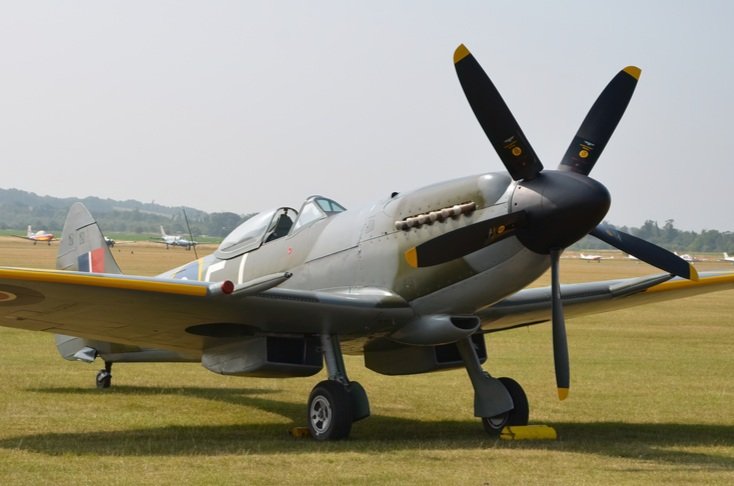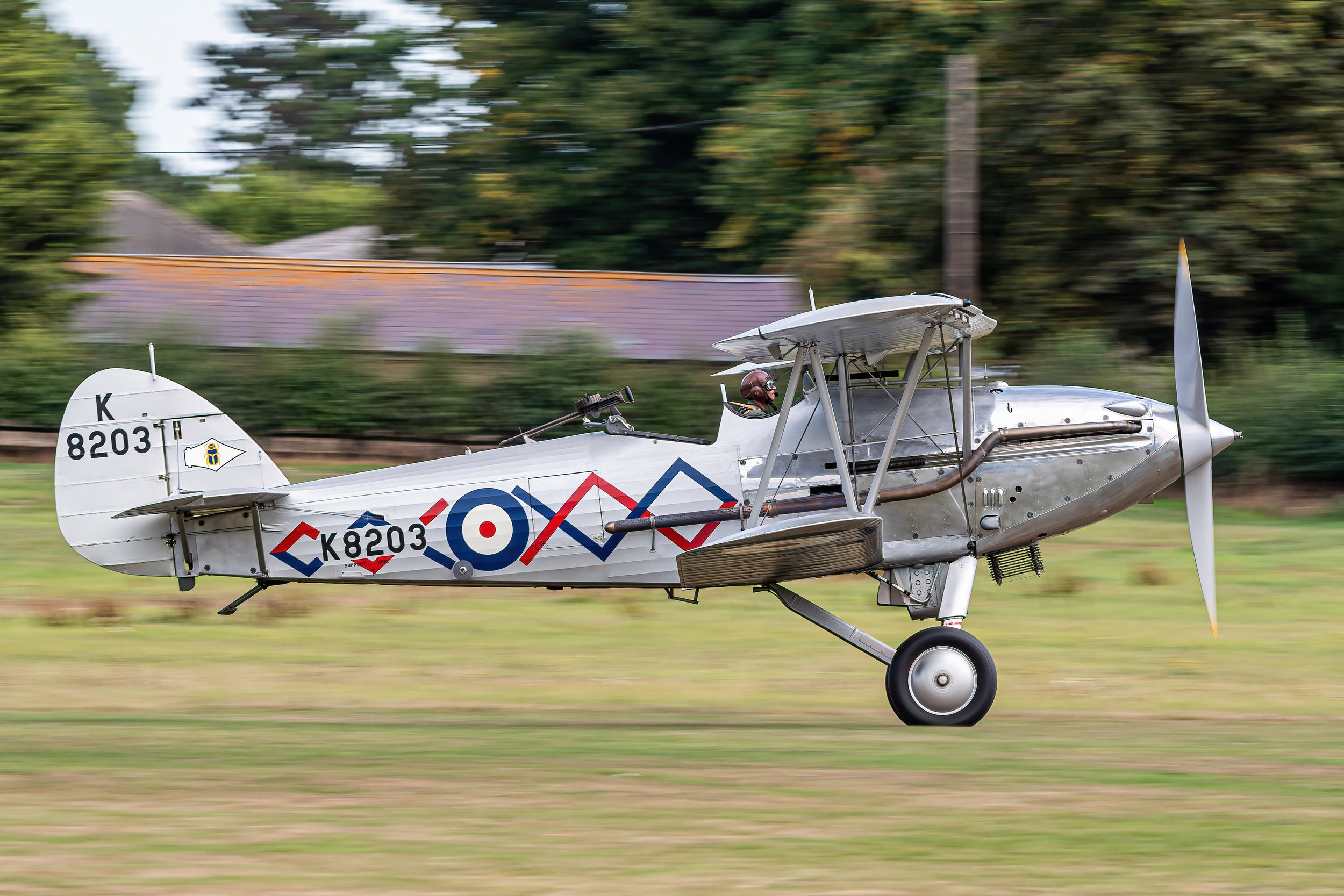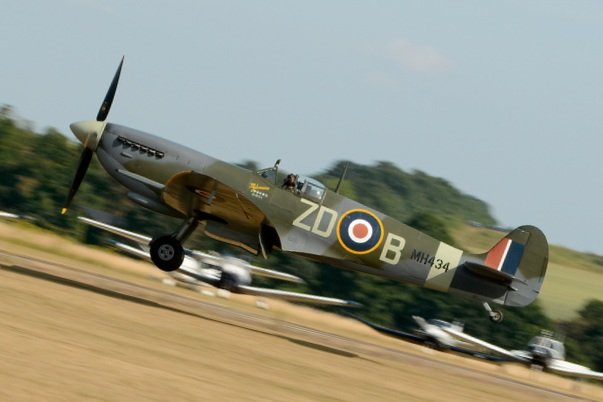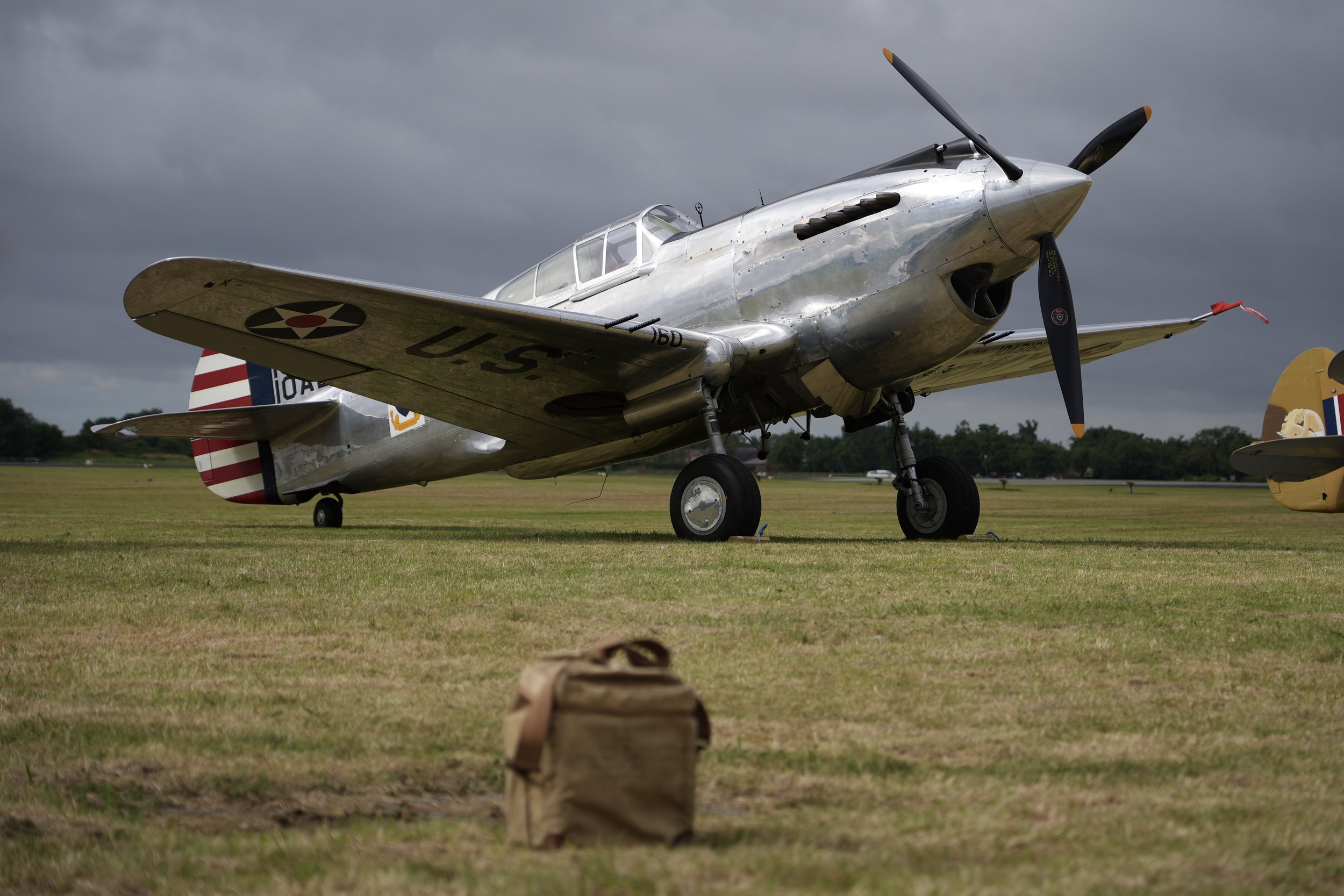Corsair G-FGID
Year built
1945
Aircraft
FG-1D Corsair
Base
Duxford Airfield
The Fighter Collection’s Corsair was built under licence by the Goodyear Aircraft Corporation at their facility in Akron, Ohio and allocated Bu No 88297. She was accepted by the US Navy on 9th April 1945 and delivered a mere two days later. She was initially dispatched to Guam in the Pacific, being allocated to the Aircraft Pool Airwing 2. The next piece of her known history has her at a Repair Depot in the Philippines, possibly Samar, for repairs in October 1945 and following this was returned ‘State-side’. She then spent a number of years being allocated to various US Naval Air Reserve squadrons as well as varying periods of storage until she was eventually put up for disposal in March 1956 with a total of 1652 flying hours on the airframe. She was purchased by ALU-MET Smelters in January 1959 and languished in their yard until being rescued a year later by legendary stunt-pilot Frank Tallman. In his book The Great Planes, Frank Tallman calls her his all-time favourite aircraft. Frank Tallman parted with the Corsair in 1966, and she passed through a number of other civilian owners until joining The Fighter Collection fleet in 1986. The Fighter Collection’s Corsair is an extremely original example of the type as she has never been restored and has the distinction of being one of the few still flying with fabric wings. She is painted in the colours of a British Fleet Air Arm machine, KD345 of 1850 Squadron during December 1945, when they were embarked on HMS Vengeance of the British Pacific Fleet.
| Back to Top |
Goodyear Corsair FG-1D
The Vought F4U Corsair is an American fighter aircraft that saw service primarily in World War II and the Korean War. Designed and initially manufactured by Chance Vought, the Corsair was soon in great demand; additional production contracts were given to Goodyear, whose Corsairs were designated FG, and Brewster, designated F3A.
The Corsair was designed and operated as a carrier-based aircraft and entered service in large numbers with the U.S. Navy in late 1944 and early 1945. It quickly became one of the most capable carrier-based fighter-bombers of World War II. Some Japanese pilots regarded it as the most formidable American fighter of World War II and its naval aviators achieved an 11:1 kill ratio. Early problems with carrier landings and logistics led to it being eclipsed as the dominant carrier-based fighter by the Grumman F6F Hellcat, powered by the same Double Wasp engine first flown on the Corsair's first prototype in 1940. Instead, Corsair's early deployment was to land-based squadrons of the U.S. Marine Corps and U.S. Navy.
The Corsair served almost exclusively as a fighter-bomber throughout the Korean War and during the French colonial wars in Indochina and Algeria. In addition to its use by the U.S. and British, the Corsair was also used by the Royal New Zealand Air Force, French Naval Aviation, and other air forces until the 1960s.
From the first prototype delivery to the U.S. Navy in 1940 to the final delivery in 1953 to the French, 12,571 F4U Corsairs were manufactured in 16 separate models. Its 1942-1953 production run was the longest of any U.S. piston-engined fighter.
| Back to Top |
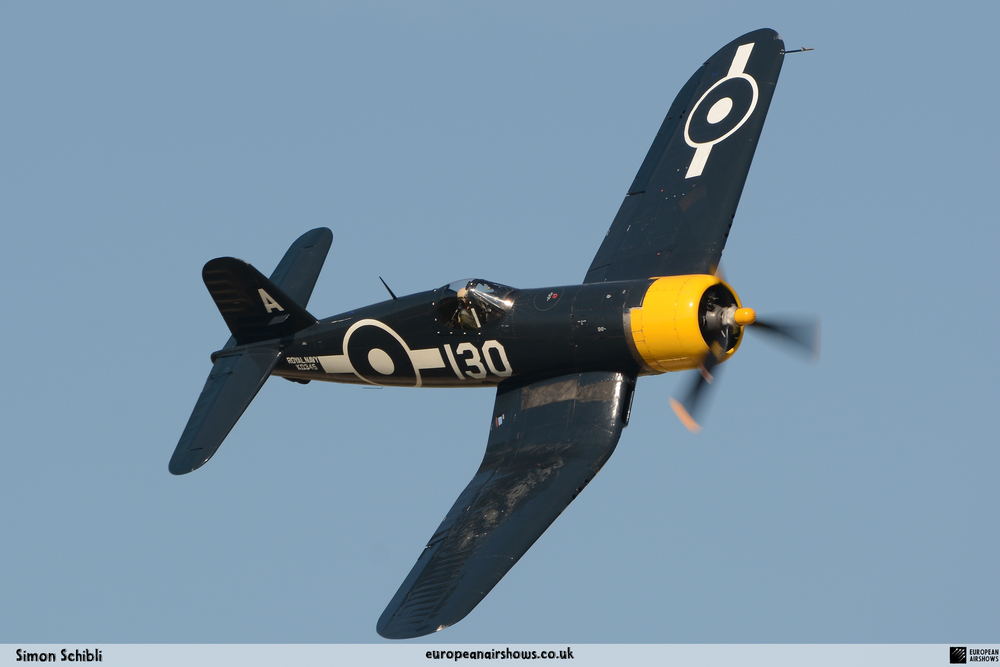
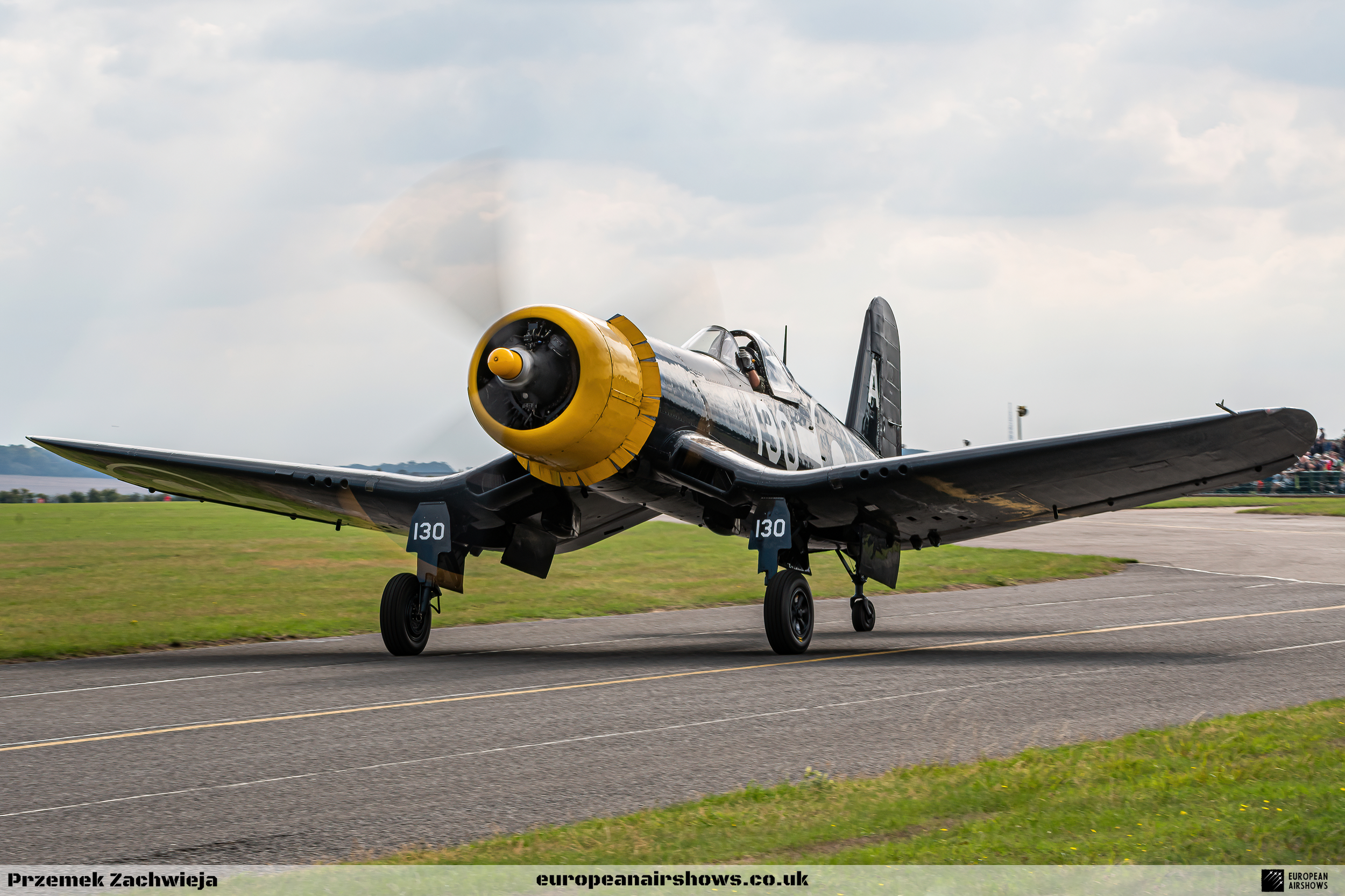
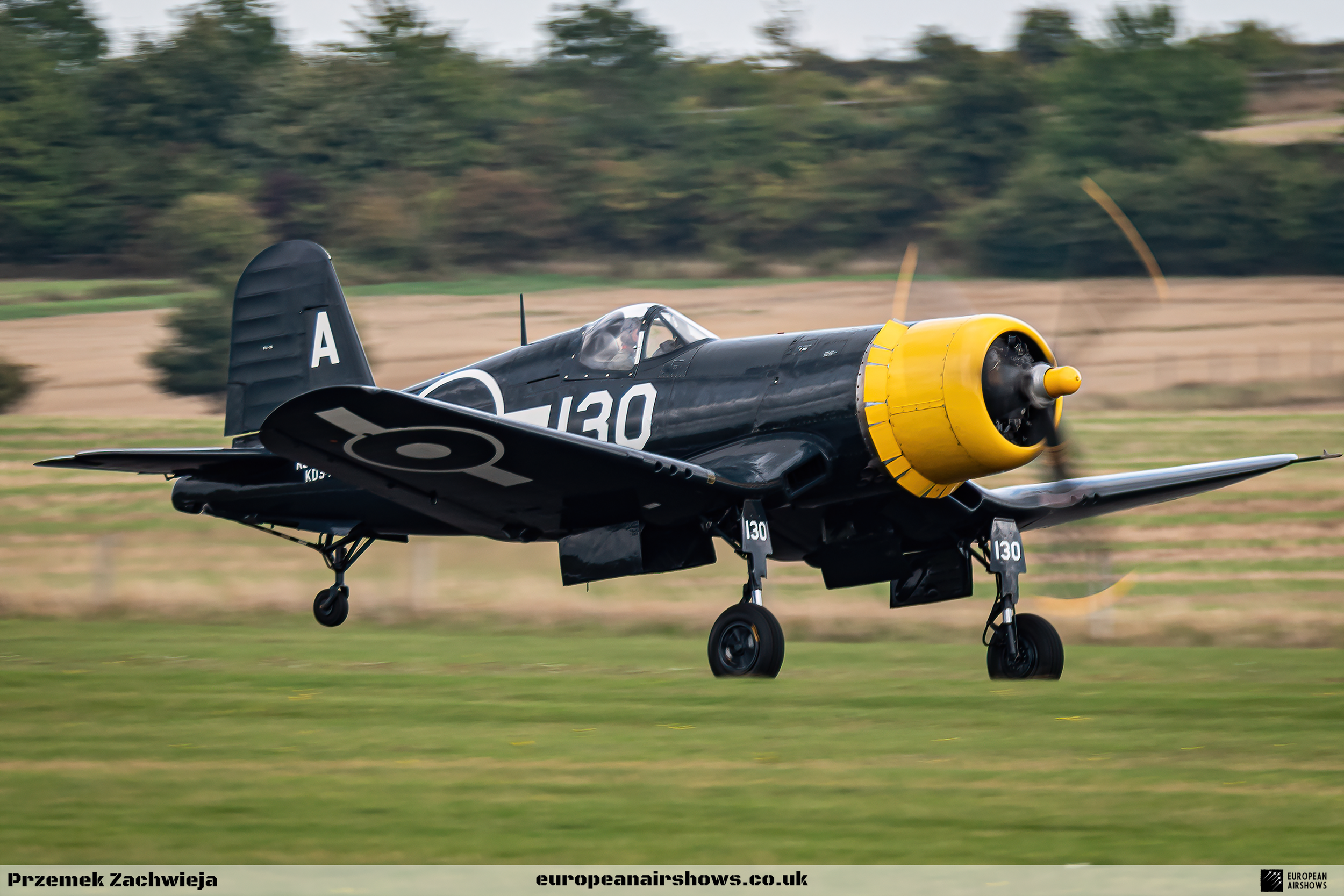


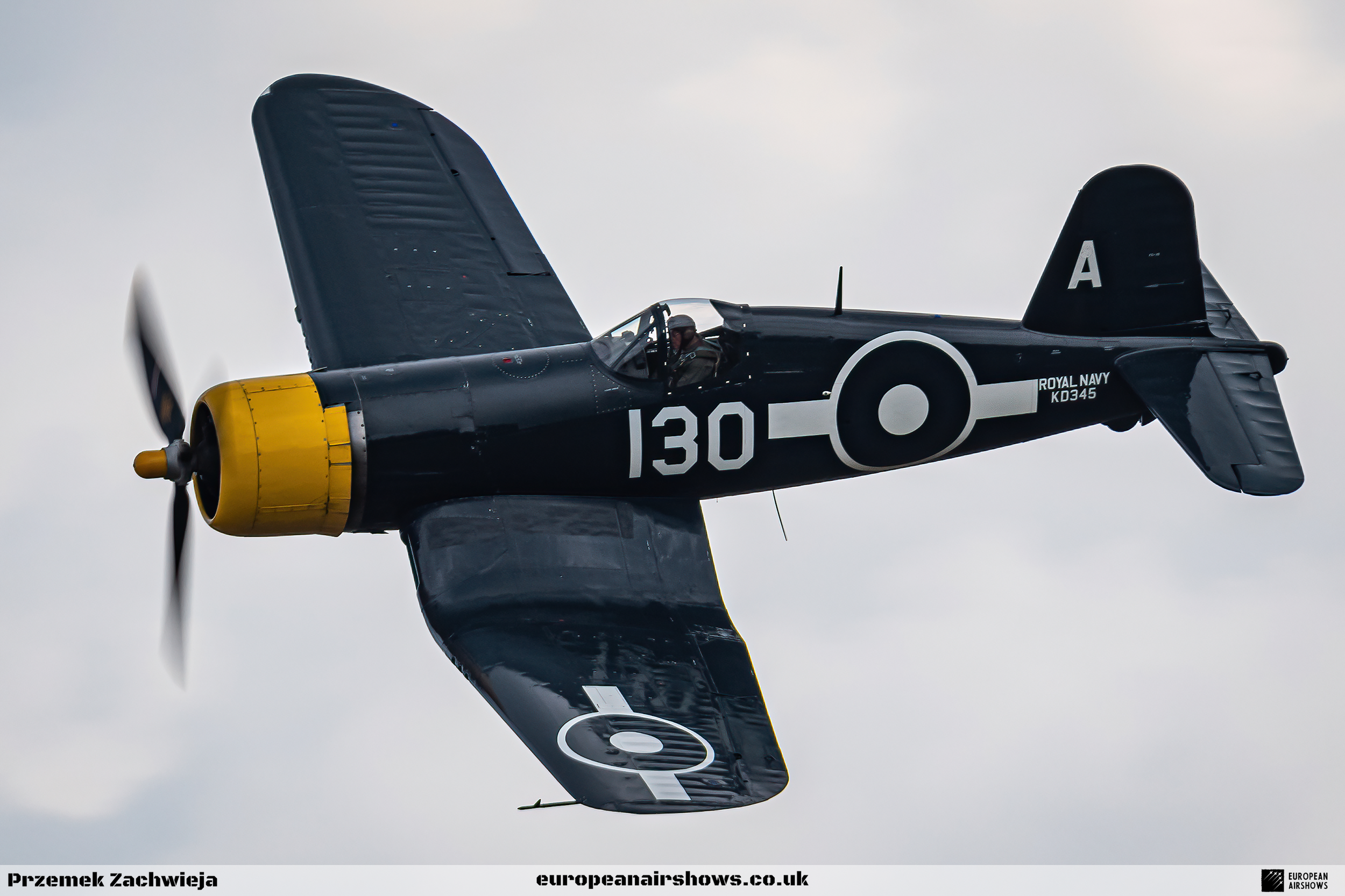
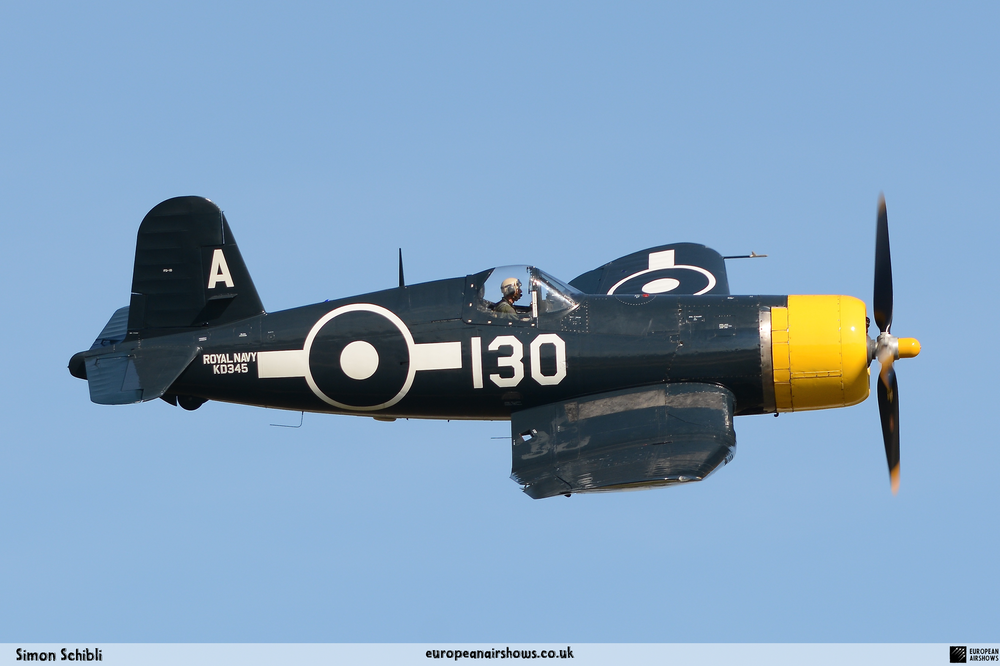
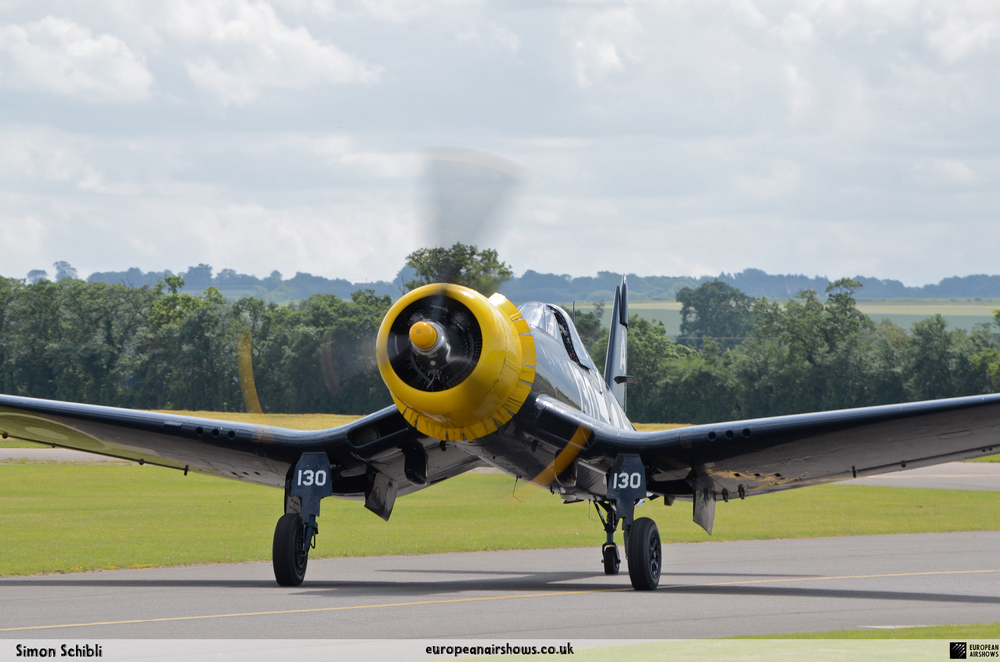
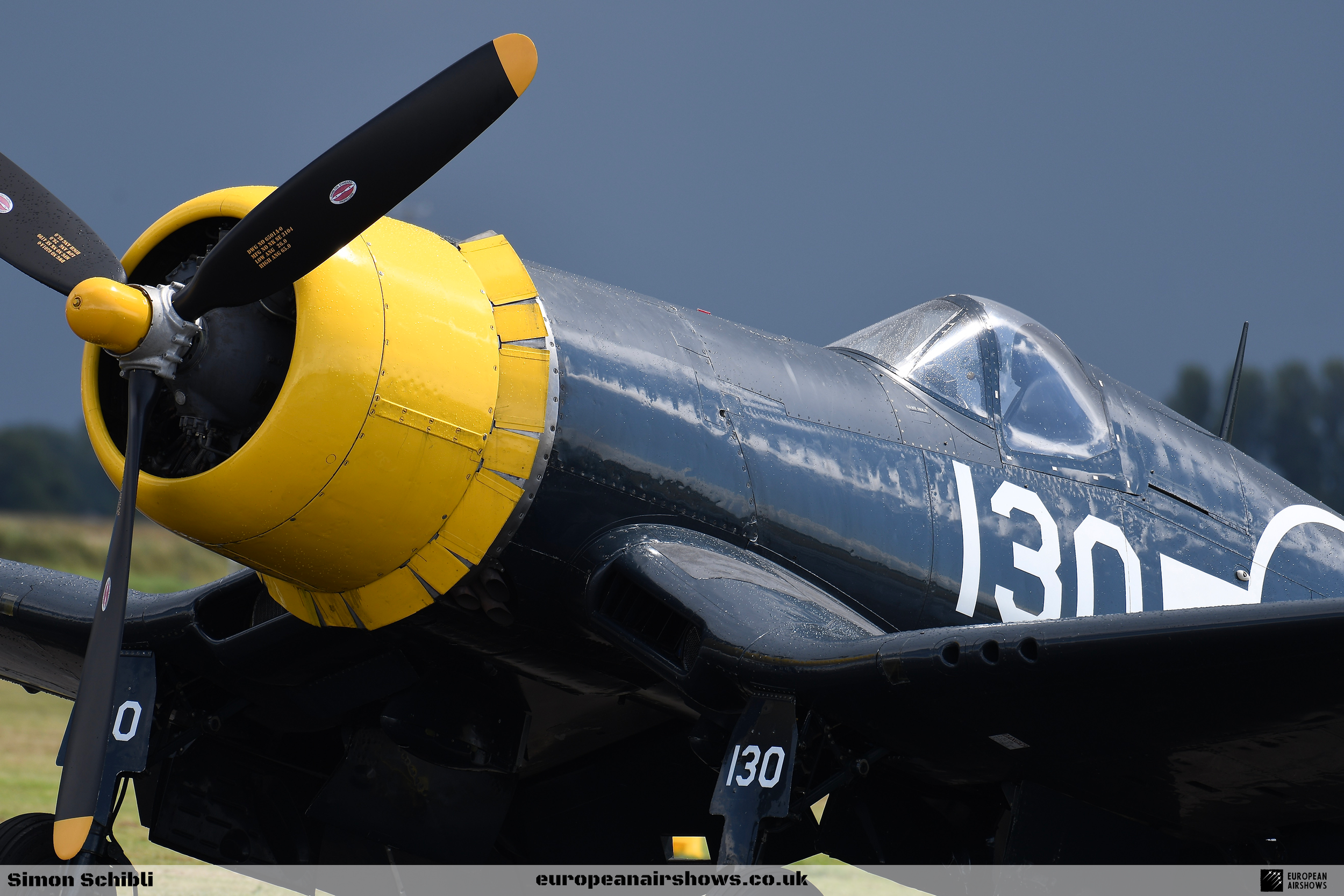

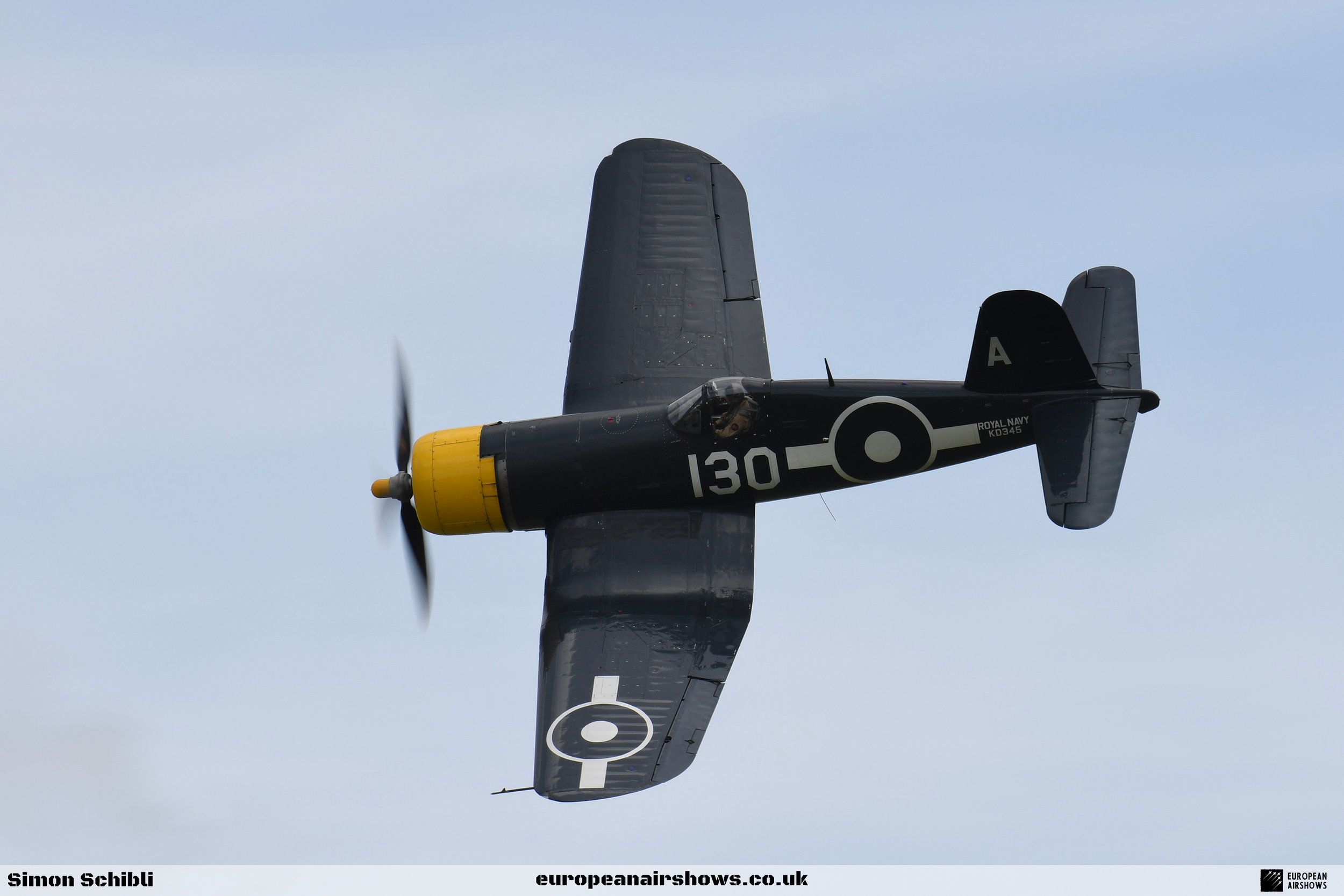
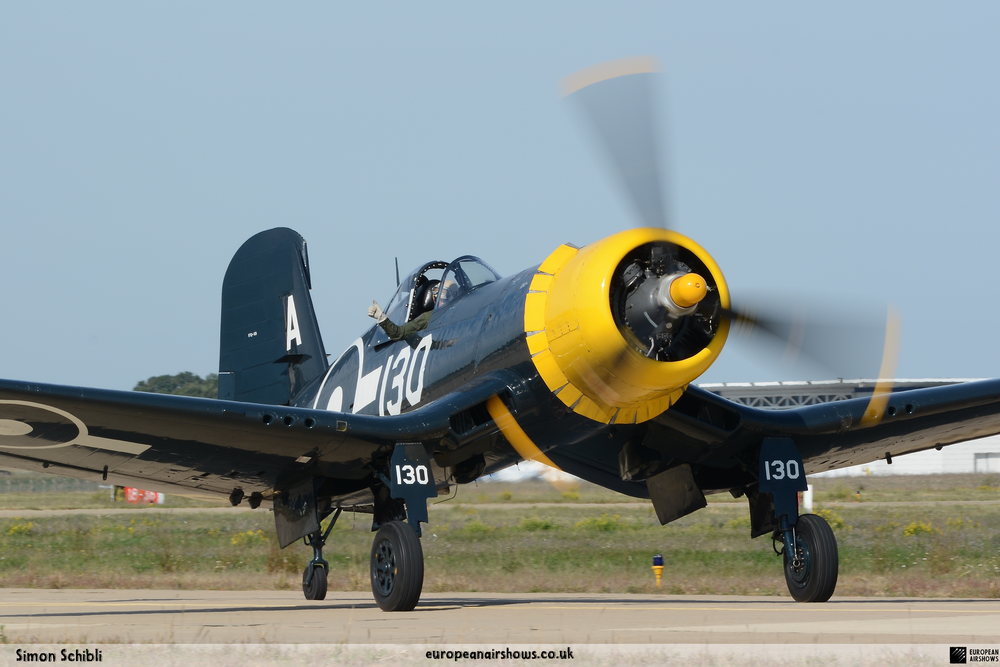
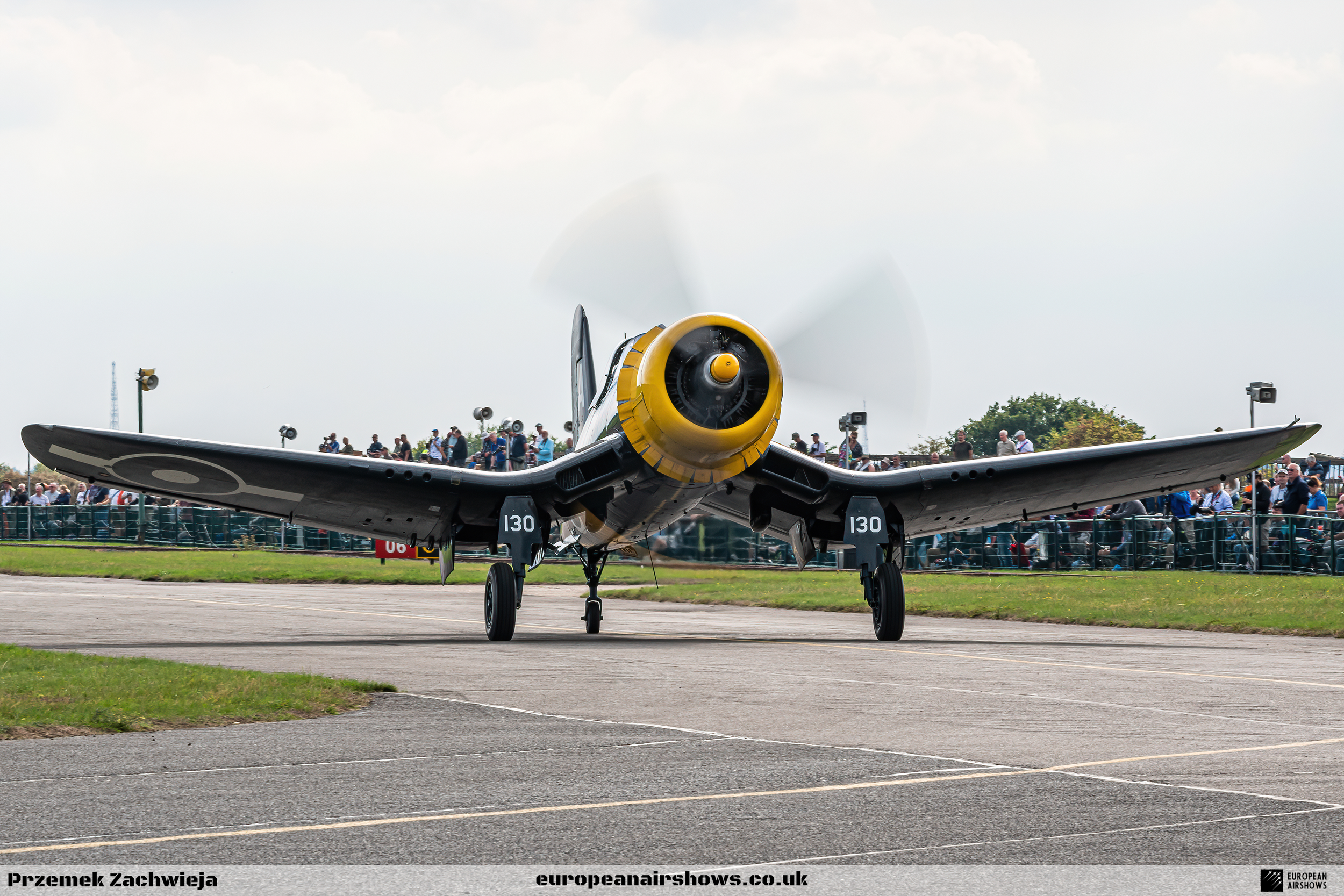
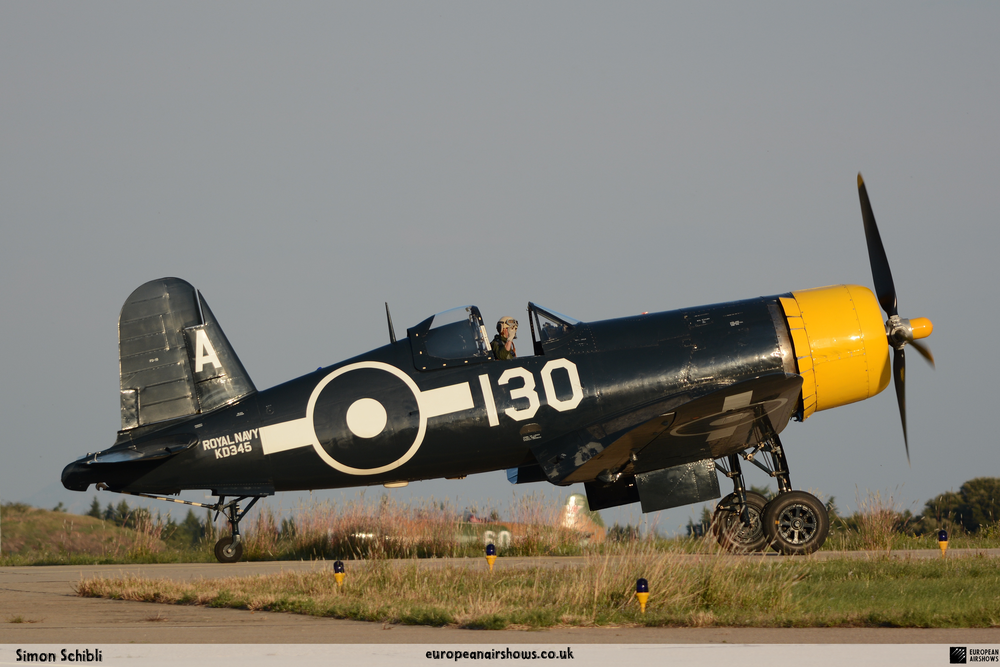
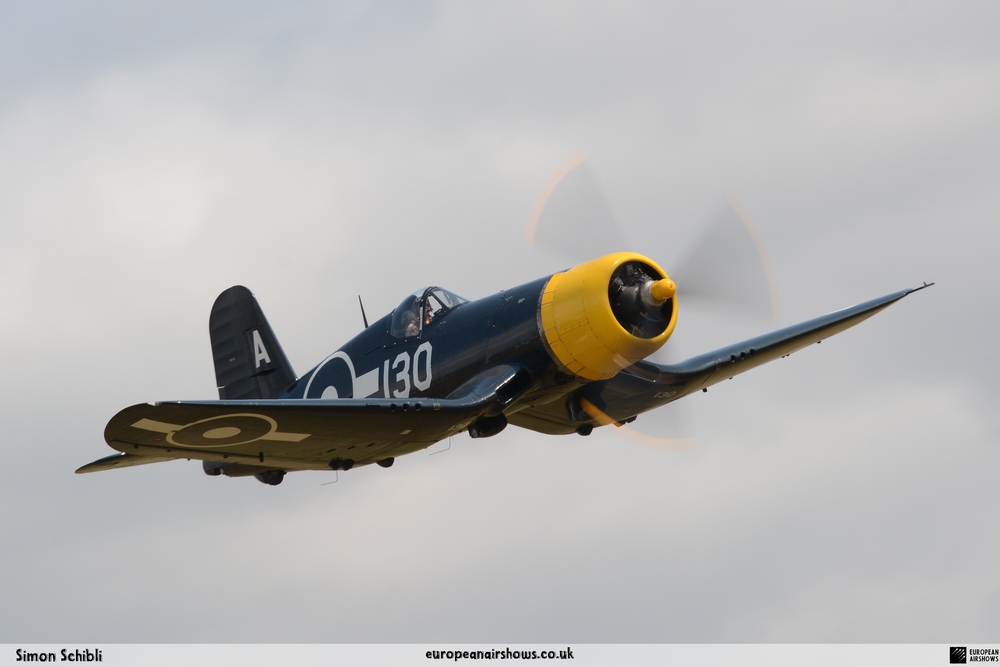
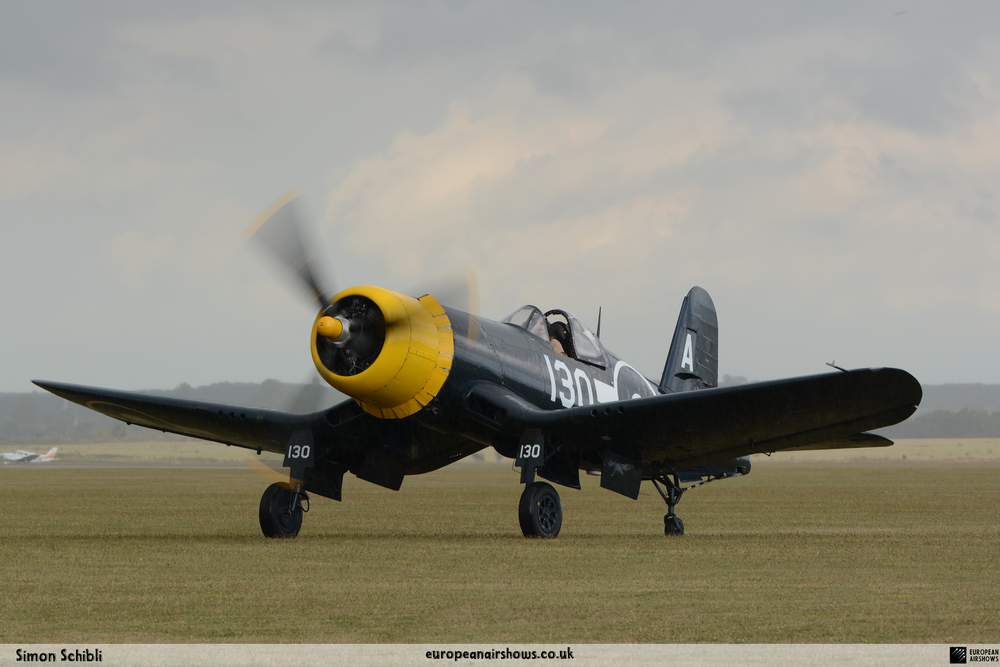
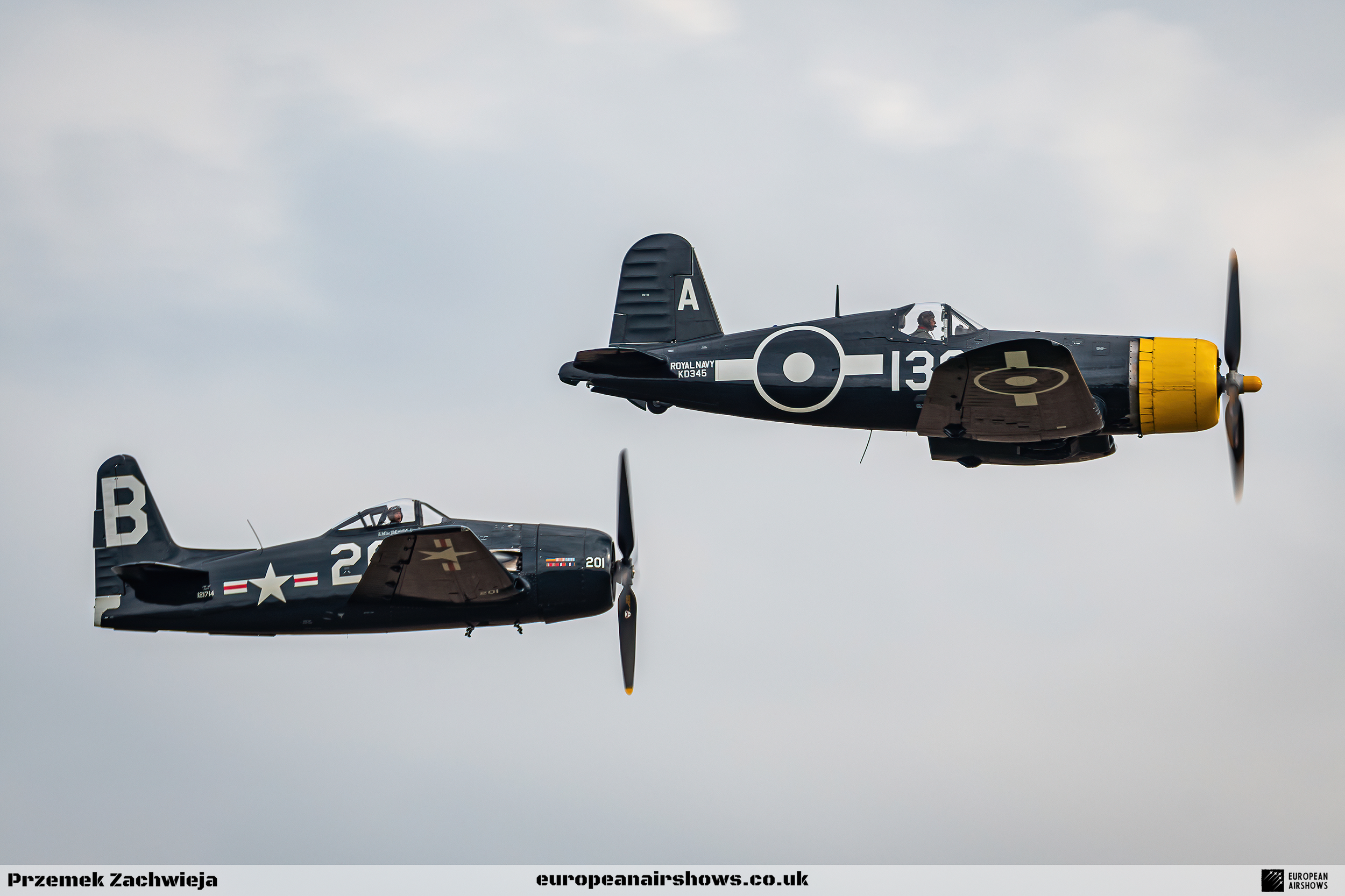
| Back to Top |






















